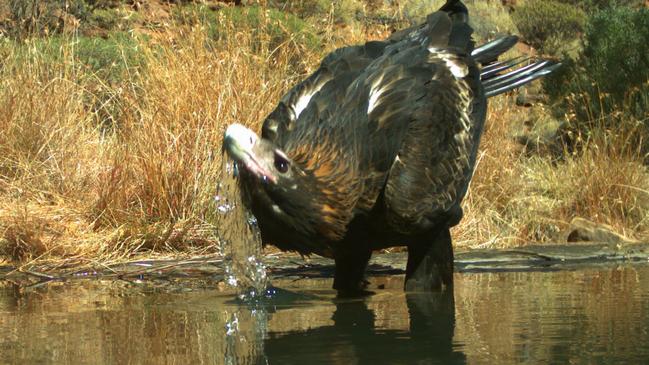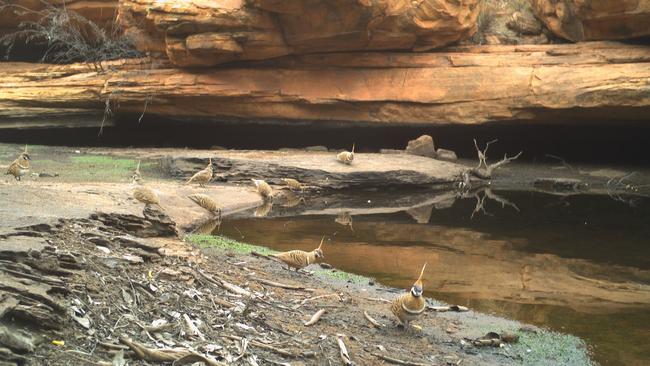Central Australian birds join forces for survival as climate change threatens waterholes
A surprising shift in bird behaviour is unfolding in Central Australia, as species once considered rivals team up for survival.

News
Don't miss out on the headlines from News. Followed categories will be added to My News.
Climate change is reshaping the social dynamics of Central Australia’s birdlife, with new research revealing once-territorial species are now co-operating to access dwindling water sources.
A study led by Charles Darwin University PhD student Simon Votto found honeyeaters, typically known for aggressively defending their food and water sources, are now waiting for finches and other birds before approaching waterholes.
Researchers believe this may be a strategy to reduce predation risk.

“We actually found they (honeyeaters) would often go into waterholes with other birds,” Mr Votto said.
“A number of times, I observed honeyeaters waiting until species like finches went in to drink, and then they would follow.”
The research builds on Mr Votto’s Honours work, which showed when temperatures exceeded 35C, birds that usually relied on their diet for hydration began seeking out waterholes.
As climate change drives temperatures higher, these sites are becoming more crucial, yet many are under threat from habitat degradation caused by feral animals like camels.

Professor Jenny Davis, the study’s principal supervisor, stressed the importance of preserving waterhole vegetation.
“Controlling wildfires … restricting access by feral herbivores, especially camels, and replanting vegetation with local species are vital strategies,” she said.
Associate Professor Christine Schlesinger also highlighted that these sites held deep cultural significance for First Nations people, who had “maintained them for millennia”.
More Coverage
Originally published as Central Australian birds join forces for survival as climate change threatens waterholes





